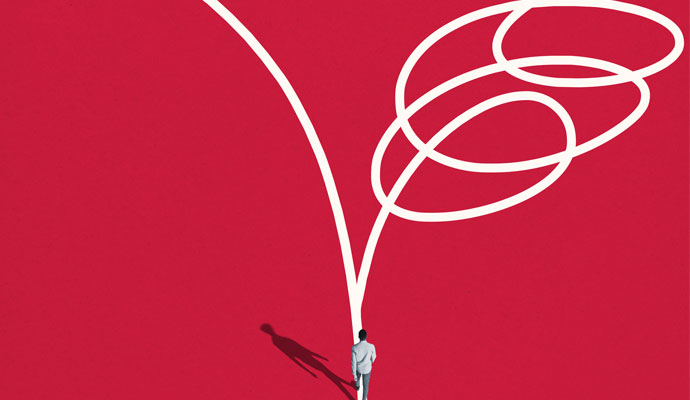Markets Adjust to a New U.S. Economic Narrative
With policy gridlock suddenly expected to ease in Washington, investor sentiment is shifting sharply.
On December 14, the Federal Reserve raised the short-term interest rate it controls for only the second time in a decade.
But the move was expected, precisely because the Fed has grown accustomed to telegraphing its every move well in advance, so as not to catch the market or investors unawares. Indeed, the narrative surrounding the Fed’s intentions has been remarkably consistent for the last several years. So long as employment continues to grow and wages rise, America’s central bank will continue on its current path of slowly raising interest rates.
Yet in the last few weeks, in essentially the same market, we’ve seen the extremely rapid formation of an entirely new narrative surrounding interest rates. Investors have unexpectedly pushed up long-term interest rates; the yield on the 10-year bond, which stood at 1.6 percent in early September, has risen to about 2.4 percent. That’s an increase of 50 percent in a matter of a few weeks, which has immense implications for borrowing, the housing market, and the economy at large.
The wrinkle here is that the narrative emanating from the big forces that we think influence interest rates — the Federal Reserve and other economy-focused agencies — hasn’t changed. The U.S. economy is like a battleship; it shifts gears and directions in a highly deliberate fashion. It wasn’t as if the government bureaucracies reported blowout numbers on retail sales, or wages, or a level of growth that would signal that the economy is lurching into an inflationary phase.
No, the change was almost entirely due to a sense that an existing narrative is shifting — albeit a political one, rather than an economic one. The financial markets have, simply put, become accustomed to a narrative defined by the existing configuration of power in Washington. Since 2010, a Democrat has controlled the White House while Republicans controlled Congress.
Based on that experience, the markets knew that this arrangement produces a familiar story: disappointingly slow underlying economic growth and fundamental differences between those two branches of government over tax and spending issues. Gridlock gave us no big tax cuts or infrastructure plans, no far-reaching policy initiatives that could shift the economy into a higher gear, nothing unexpected. As a result of this stasis, annual budget deficits, which had fallen from 10 percent of GDP in 2009 to about 3 percent of GDP in 2016, would likely remain within a narrow band. This realistic political narrative translated into a narrative about long-term interest rates — they’d likely remain muted, regardless of the Fed’s actions.
In the lead-up to the November election, the general consensus was that this balance of power would continue into 2017 and beyond. This, after all, seemed to be the narrative that almost everybody had agreed on, including prediction engines like 538, polling aggregators like Real Clear Politics, and betting markets like the Iowa Electronic Market. The financial markets, as they often do, took their cues from these widely followed opinion markets. Investors presumed the same general state of play would hold in Washington, with similar implications for the bond market: Amid divided government and low growth, there would be little stimulus and the U.S. economy would be characterized by low inflation and low interest rates.
The financial markets, as they often do, took their cues from these widely followed opinion markets.
But, of course, the election defied the conventional wisdom and the prevailing narrative in the opinion and financial markets. Instantly, market participants had to adjust to a new narrative. Rather than a division of power, there would be a single party controlling both the White House and Congress in 2017 and beyond. Large tax cuts — which were not on the table at all — suddenly seemed very likely. Increased spending on infrastructure and defense — again, seen as highly unlikely November 7 — became near certainties November 9.
Taken together, this narrative holds, such policy efforts could stimulate a higher level of economic growth while increasing short-term deficits. And if both of those come to pass while the Federal Reserve is already raising short-term interest rates, then there are good reasons to think that interest rates might be pushing broadly higher.
In the last few weeks, we’ve seen a collective, near-instant realization that trillions of dollars of assets had been mispriced. The volatility and dislocations are signs that a new economic narrative is emerging.




